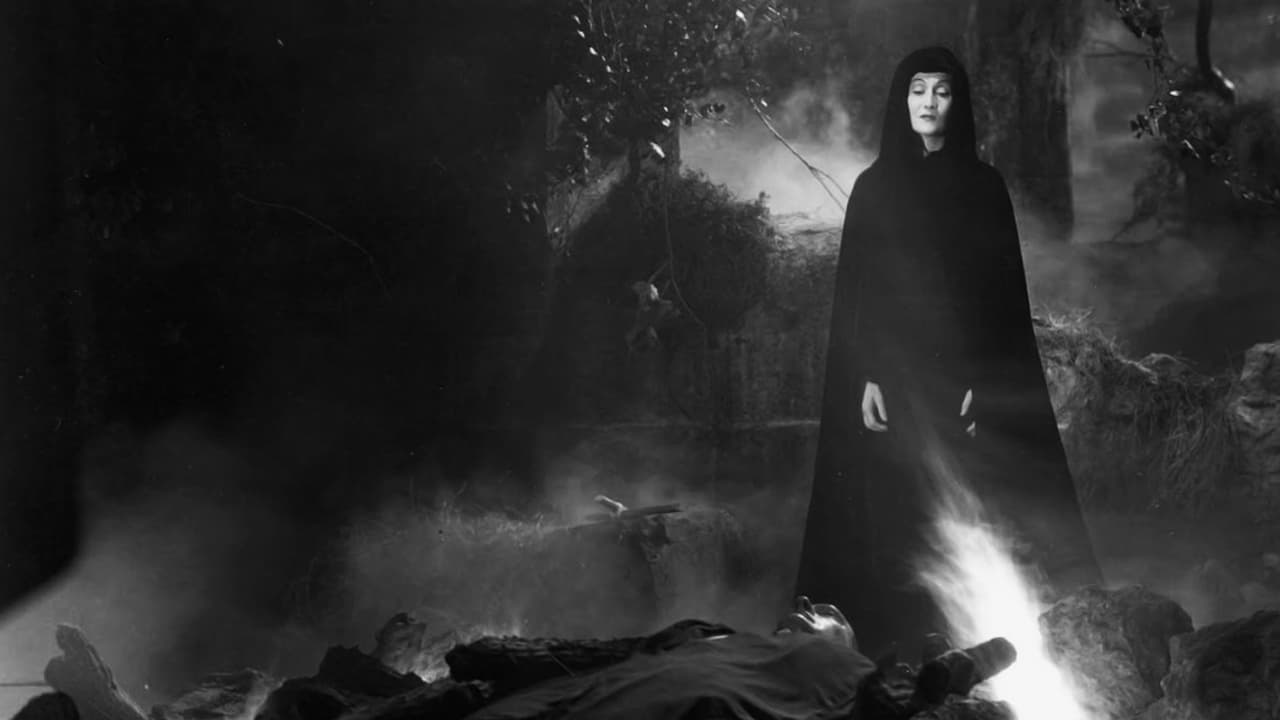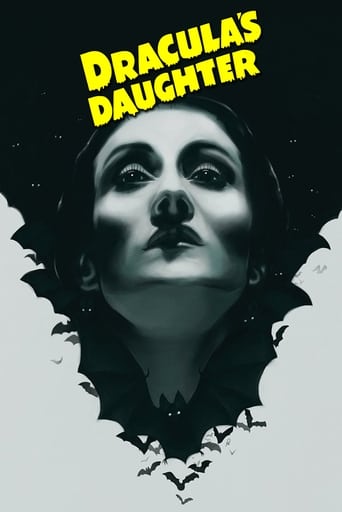

"Dracula's Daughter" is a direct sequel to the 1931 film.The beginning picks up from where "Dracula" left off, with Van Helsing having destroyed the undead Vampire.Gloria Holden - totally obscure apart from this movie - is well cast in the title role. She exudes eroticism and an aura of mystery. I was pleased to discover that Edward Van Solan was cast again as Van Helsing - he gives a better performance this time around.Otto Kruger is a bit too gruff and cantankerous as the man who attempts to help his friend and old tutor, Van Helsing.The film sensibly sets the film in England as it helps with the overall continuity.James Whale was originally slated to direct "Dracula's Daughter" - a shame he didn't.
... View MoreDracula'S DAUGHTER occupies a fairly unique niche in the world of Universal Monster horror. It was not long after this film was made that Carl Laemle (overseer of Universal's golden age) was ousted from the studio. There is a pretty clear demarcation between the Uni monster movies made during his era and those that would come afterward. The later sequels were really "reboots", made up of new characters and new settings using the same monsters or themes. Under Laemle's supervision the studio created Dracula, FRANKENSTEIN and THE MUMMY and really just two sequels. In '35, the released THE BRIDE OF FRANKENSTEIN and its' success led to this movie a year later. They would be much different than the later sequels in that they were direct sequels with many of the same characters and actors that were featured in the originals.Sadly, this movie doesn't come close to the majesty of Dracula or the sequel that precipitated it BRIDE OF FRANK. The movie picks up immediately after the events of Dracula, with the police discovering the vampire's corpse and Van Helsing. Soon after, Drac's daughter shows up to steal his corpse and set his soul free, then commences on her own reign of terror. Along the way, she meets a psychiatrist, who she is convinced can free her from her curse and in that storyline we get the main impetus of the plot.There are several noteworthy things about this movie. 1) The countess has a human medium named Sandor, who has been promised eternal life and, in exchange, watches over her during the day. To my knowledge, this is the first real use of this horror archetype that would become a staple of the vampire genre in both movies and literature. Of course, much has been made of the lesbian subtext, as well. 2) Another vampire pattern that seems to start here is the idea of the "tortured soul". Before this vampires were always beings of pure evil, with no empathy invoked in the audience. This is one of the first examples created of the vampire lamenting their fate and seeking to escape the curse of eternal life. 3) This movie borrows from Bram Stoker's unused chapter DRACULA'S GUEST, as well as the CARMILLA story. By featuring a woman vampire who preys on other women (and touches on the sexuality between them), we get the blueprint for much of what would come later in many lesbian vampire movies, including the Ingrid Pitt movies from Hammer.Those are just museum curiosities, though, and historical relevance does not equate to entertainment. I, personally, find this one of the least interesting of the entire Universal monster catalog. Except for the intro and finale pieces, there is little atmosphere or mood invoked. Most of the action takes place in parlors, with characters discussing things. While this is very common in early cinema, Universal was typically better at creating worlds for their monsters to inhabit. The vampire herself never feels very threatening or scary and except for one scene (when Sandor brings her home a midnight snack) there is really very little horror here, at all.There are many who praise this film as an unheralded treasure and, naturally, those in the homosexual community who view it as an early champion. As a lover of the Universal monsters, who has seen pretty much the entire catalog, I can tell you that you can do better on a dark Saturday night.
... View MoreOUR STORY OPENS up at the death of Count Dracula at the hand of Van Helsing. The descent of the stake through the heart, followed by the obligatory super sigh, marked the passing on of the Dracula dynasty to yet another "generation".IN A HIGHLY SUBTLE manner, the eerie horror of "the Undead" is continued; quietly maintaining the dark and creepy ambiance; which was established by Director Todd Browning in Dracula (Universal, 1931). Hence, the howl of the wolf, the flapping batwings and mirrors' lacking reflections all became standard elements of Universal Pictures dark mythology.THE CHARACTERIZATION OF the female vampire heir to the Dracula estate is both multi-faceted and at the same time, fascinating. British born actress, Gloria Holden, projects a very feminine persona, a most unusual sort of beauty and a slow, deliberate speech pattern. All the while she is speaking, she seems to be crying underneath. Nearly expressionless and wooden, her countenance is as one truly dead.IN MORE RECENT times, with the wave of handsomer, sexier vampires, such as Frank Langella's portrayal in Dracula (Mirisch Company/Universal, 1979), the notion that the vampire used sex as a springboard to his sanguinary conquests came to the forefront. DRACULA'S DAUGHTER , is the prime example appears to be somewhat ahead of the curve; albeit in the form of lesbianism. The scene where Countess Zeleska (Dracula) auditions a poor girl from the street as a potential artists' model.THIS IS PROBABLY a major entry in the resume of director, Lambert Hillyer; whose output had a very unusual range. Starting in the days of the Silent Screen and William S. Hart westerns, to titles such as THE INVISIBLE RAY(Universal, 1936), BATMAN Serial (Columbia, 1943)and down to ZIV TV Productions' THE CISCO KID, HIGHWAY PATROL and I LED 3 LIVES. The durable and versatile Mr. Hillyer never lacked work during a 40+ year ride on the Hollywood Merry Go Round.THERE IS A LESSON here for our bright, young and well educated filmmakers of the 21st Century. In DRACULA'S DAUGHTER (as with so many of the other horror classics of the day). That is namely, subtle horror with hints of the frightening is much more effective and scary than all of that Technicolor blood & gore that we see all too often today.
... View MoreIn London, two policemen find the body of a man, Renfield, with neck broken and Dracula with a stake through his heart. They arrest Prof. Von Helsing (Edward Van Sloan) that tells that he did it and take him to the Scotland Yard. The inspector Sir Basil Humphrey (Gilbert Emery) asks Von Helsing who might defend him and the professor asks for the psychiatrist Dr. Jeffrey Garth (Otto Kruger). Meanwhile, the mysterious Countess Marya Zeleska (Gloria Holden), who is Dracula's daughter, compels the policeman that is in charge to take care of the bodies and takes Dracula's body with her to bury him with her assistant Sandor (Irving Pichel) before dawn, expecting to be released from the family's curse. In Edinburgh, Jeffrey is hunting with friends and his assistant Janet Blake (Marguerite Churchill) comes to tell him that he has an appointment with the Scotland Yard to help his friend Von Helsing. When Von Helsing tells him about Dracula, Jeffrey believes that he is obsessed with the vampire and promises to help him. During the night, he goes to a party where he meets the Hungarian Countess and he tells his theories about the vampire blood thirsty that he believes is an obsession. Now, Countess Zeleska believes that Jeffrey can heal her and release her from her blood thirsty and she wants to bring him to her castle to spend the eternal life with her in Transylvania."Dracula's Daughter" is a great vampire movie, with the dramatic story of a vampire woman that wishes to be free from the curse of her father, Dracula. The plot is naive and funny, and the relationship between the annoying Jeffrey and the witty Janet is amusing. This is one of the best movies of Universal Studios in this genre. My vote is seven.Title (Brazil): "A Filha de Drácula" ("The Dracula's Daughter")
... View More